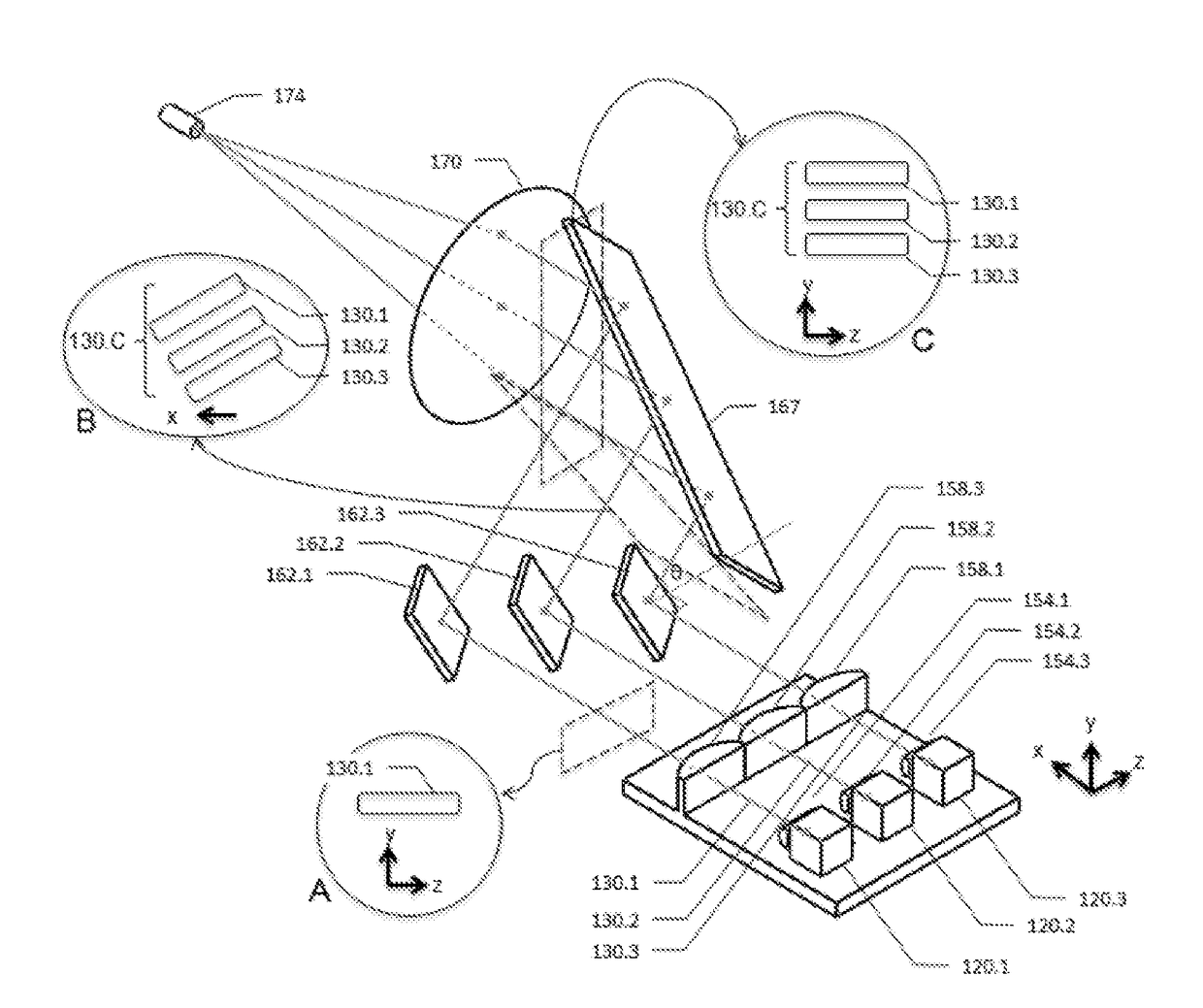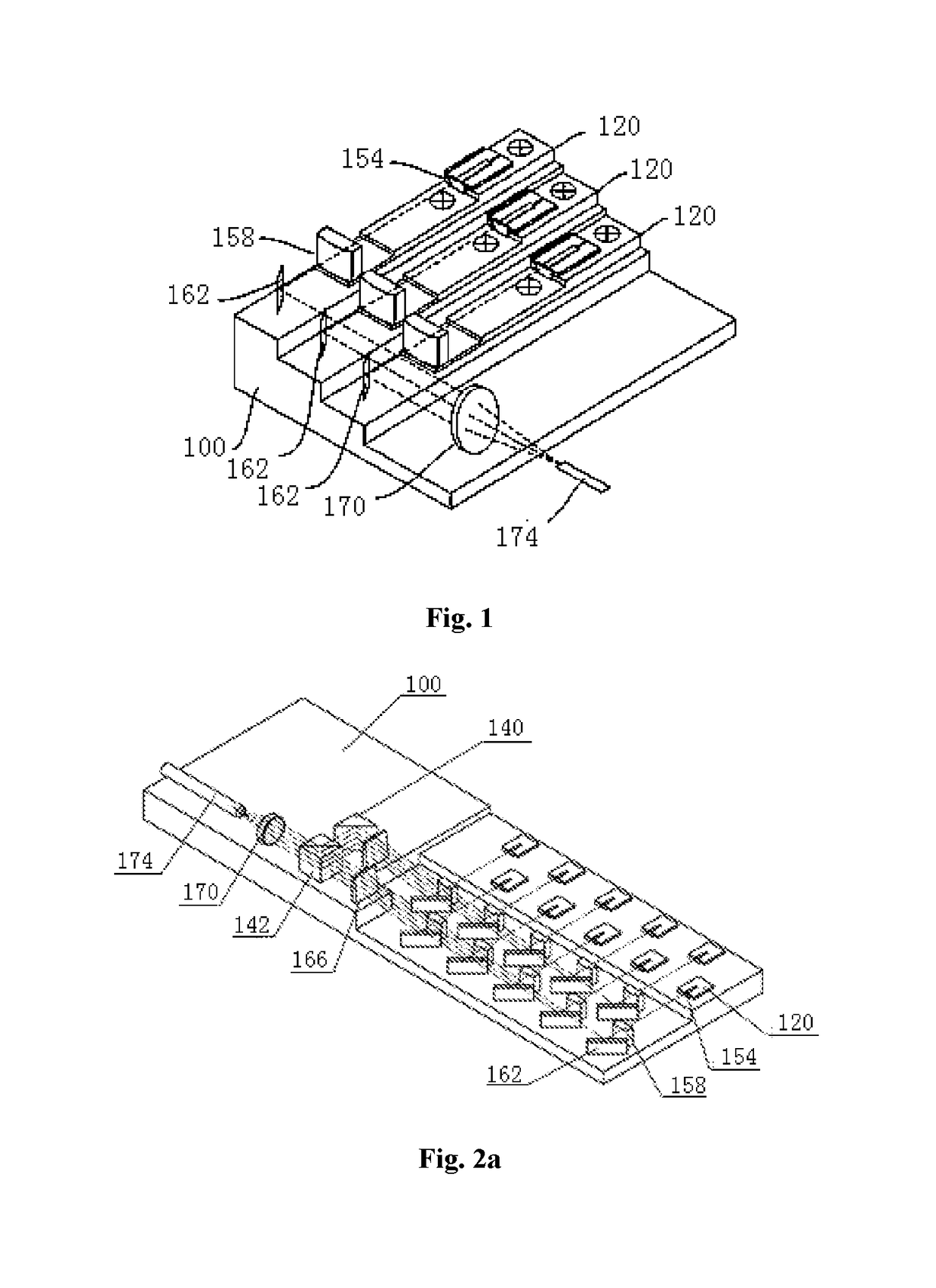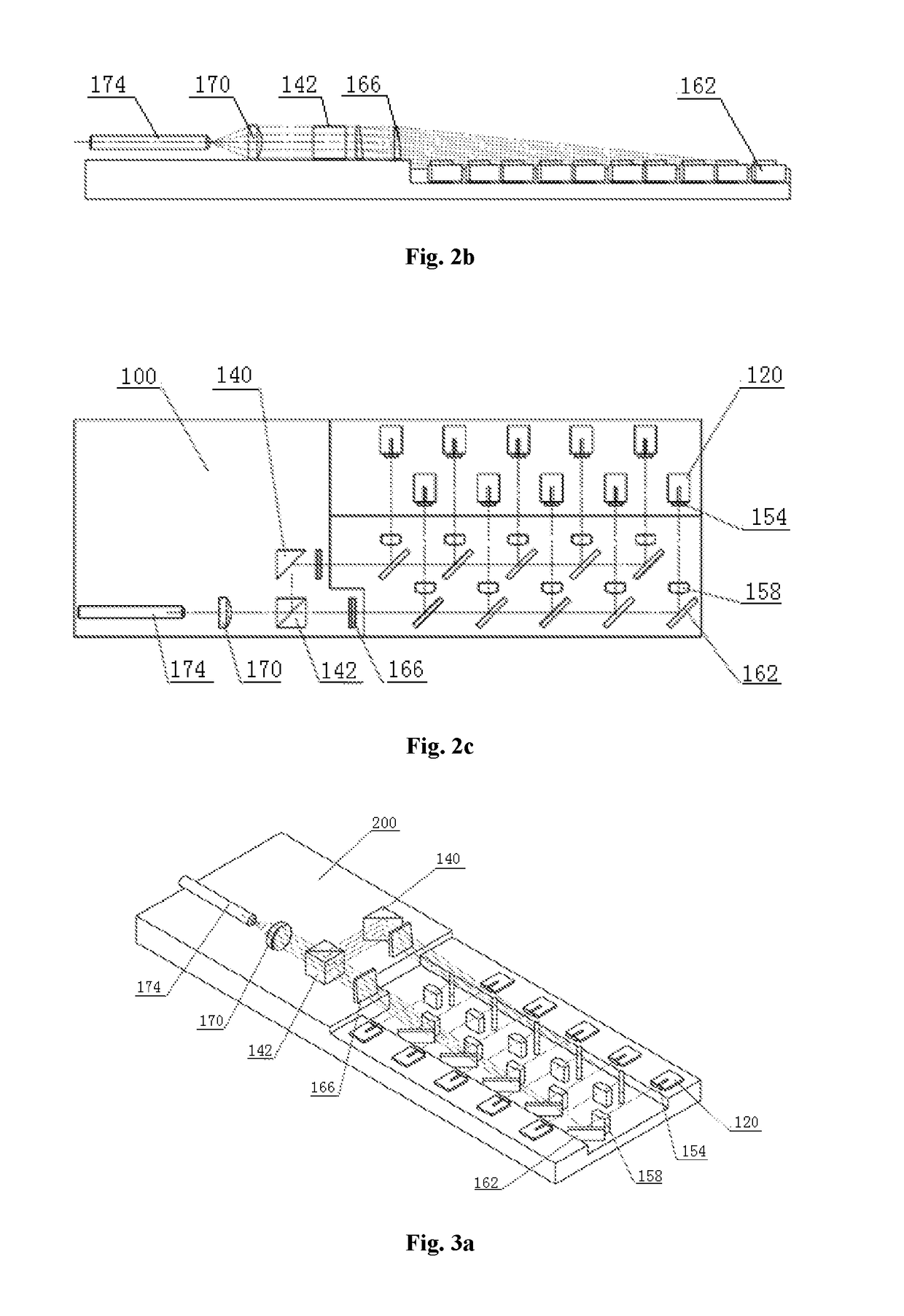A Semiconductor Laser
a semiconductor laser and laser technology, applied in semiconductor lasers, instruments, optical elements, etc., can solve the problems of reducing the rate of finished products, adversely affecting the quality of finished products, and high processing costs, so as to improve the efficiency and reliability of lasers, reduce the thickness of substrates, and reduce the effect of thermal dissipation
- Summary
- Abstract
- Description
- Claims
- Application Information
AI Technical Summary
Benefits of technology
Problems solved by technology
Method used
Image
Examples
embodiment 1
[0046]The present invention relates to a fiber-coupled laser, as shown in FIG. 2a-2c, including a substrate 100, two rows of lasers 120, a plurality of fast axis collimation components 154, a plurality of slow axis collimation components 158, a plurality of steering mirrors 162, a steering rectangular wedge prism 166, a steering prism 140, a polarization beam combination prism 142, a focusing lens 170 and a coupling optical fiber 174. The steering compression optical systems are the combinations of the steering mirrors 162 with the steering rectangular wedge prism 166. The laser beams outputted by the plurality of lasers 120, after being collimated and combined, are coupled into the optical fiber 174, and then outputted.
[0047]In the present embodiment, the substrate 100 is made of a material of high thermal conductivity such as oxygen-free copper. As shown in FIG. 2a-2c, there are three planes of different heights on the substrate 100 which are respectively used for carrying the las...
embodiment 2
[0049]The structure of the present embodiment is substantially the same as that of the Embodiment 1, except that the two rows of LDs are relatively crossed and welded at two opposite sides of the substrate 200 and all of the LDs are located in the same horizontal plane, as shown in FIG. 3a-3c.
embodiment 3
[0050]Two rows of lasers 120 are located in different planes, each row of emitters is located in the same horizontal plane, and there is a specific spacing d2 in heights between two rows. The steering compression optical systems are formed by the combinations of the steering mirrors 162 and a rhombic prism 135. The rhombic prism 135 lifts the beams emitted by the lower row of lasers 120, ensuring that the two beams of laser, after being steered and compressed, have the same height when arriving at the polarization beam combination prism 142, as shown in FIG. 4a-4c.
PUM
 Login to View More
Login to View More Abstract
Description
Claims
Application Information
 Login to View More
Login to View More - R&D
- Intellectual Property
- Life Sciences
- Materials
- Tech Scout
- Unparalleled Data Quality
- Higher Quality Content
- 60% Fewer Hallucinations
Browse by: Latest US Patents, China's latest patents, Technical Efficacy Thesaurus, Application Domain, Technology Topic, Popular Technical Reports.
© 2025 PatSnap. All rights reserved.Legal|Privacy policy|Modern Slavery Act Transparency Statement|Sitemap|About US| Contact US: help@patsnap.com



